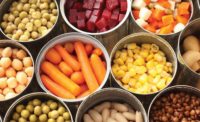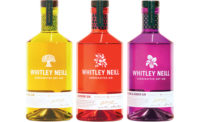Packaging Outlook 2020: Metal Can Packaging

The Can Manufacturers Institute (CMI) is putting the metal cans strong sustainability profile front and center. CMI created an innovative, effective communication plan that demonstrates to consumers, customers and other stakeholders the positive economic and environmental impact of recycling aluminum and steel cans. The facts show that metal cans are the sustainable, circular packaging choice.
Aluminum beverage cans are the most recycled drinks package in the world, and steel foods cans are the most recycled food package in the world. The industry wants to build on these leading recycling rates. In the U.S., the recycling rate for the aluminum beverage can is 50% and the steel food can recycling rate is 71%.
Still, many precious cans end up in the landfill. The equivalent of eleven 12-packs per person, 45 billion aluminum beverage cans, go to landfill. Cans dying in the landfill is particularly wasteful since aluminum and steel can be recycled infinitely without any loss in quality, and these materials provide needed revenue to recyclers.
Metal has a relatively high economic value in the recycling system. The aluminum can has the highest economic value among typical curbside recyclables — worth a little over $1,000 per ton in the U.S. Steel is also a revenue source for recyclers, with its value around $100 per ton in the U.S. And recyclers want these high-value cans back so they can get desperately needed revenue to support the processing of the many less valuable materials in the recycling system. In fact, some materials, like glass, typically cost money to recycle.
One way to capture more cans is to sort them accurately at material recovery facilities (MRF). Unfortunately, analyses shows that between one in 10 beverage cans are missorted at the MRF. This could be for a variety of reasons, including flattened cans getting mixed in with paper, cans with shrink sleeve labels getting mistaken for plastic, and all cans not being separated out by an eddy current. One solution is installing a second eddy current. Eddy currents are the traditional way aluminum is separated from the rest of the recyclables, but a single or outdated eddy current misses cans. MRFs can divert an additional 30,000 pounds of aluminum with a second eddy current, and they can see a return on that investment in as few as four to six months. The sortation of steel cans at MRFs is less of an issue, since steel is metallic and can be easily separated with magnets from the rest of the single stream recyclables.
Another way to capture more cans is for more people to recycle them. However, many people are confused about recycling and do not understand the fundamental aspects of metal, such as its high economic value and that it can be recycled infinitely without any loss in quality. Those that do understand the can’s existing circular system put their cans into the bin knowing that their container will actually be recycled into a new, recyclable product.
With more cans recycled, can manufacturers can make more cans with the high-recycled content the industry uses today. The average aluminum can in the U.S. has a recycled content of 73%. Most all recycled cans transformed into new cans have a significant environmental impact. When an aluminum can is produced from recyclable material, it saves more than 90% of the energy used and greenhouse gas emissions produced in comparison to making that same aluminum can from virgin material. Steel cans have a recycling content of up to 35%, which is capped due to current steel-making technology used for food cans, but it is still a leading percentage among food packaging. Steel in recycled food cans not used to make new cans is used for a variety of new steel products since steel is an “open loop” system in which the steel of many different products can be used interchangeably. This is why 80 to 90% of all steel ever produced is still in use today.
The can’s advantages in recycled content, recycling rate and economic value are why it is the container best positioned to help beverage and food companies meet their ambitious sustainability goals, including higher recycled content and increased recycling rates for their packaging.
As an industry, the can manufacturers want to ensure that non-governmental organizations, policy makers, beverage and food can manufacturers and, of course, consumers, realize that metal cans are precious and that increased use and recycling of cans can reap significant economic and environmental benefits.
Robert Budway, president of Can Manufacturers Institute, provided the information for this section. Visit cancentral.com for more information.
Packaging Outlook 2020 Articles:
|
Looking for a reprint of this article?
From high-res PDFs to custom plaques, order your copy today!






